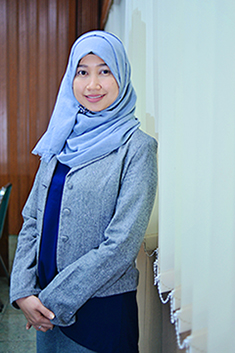Acute and Subchronic Toxicity Assessment of 70% Ethanol Extract of Gendarusa Leaves In Vivo
Downloads
Background: Justicia gendarussa Burm. f., has been used traditionally in Indonesia for antifertility. Nowadays, a capsule containing 70% ethanol extract of J. gendarussa leaves has been studied for safety. Objective: This study aimed to determine the acute and sub-chronic toxicity of 70% ethanol extract of J. gendarussa leaves in vivo. Methods: In the acute toxicity study, a single dose of 2,000"‰mg/Kg BW was orally administered to mice (n = 10), which were monitored for 24"‰days. For the subchronic toxicity study, rats were randomly divided into four groups (n = 10). The control group received distilled water, while the treatment groups received a repeated dose of 40, 200, and 1,000 mg/Kg BW orally for 90 days. Blood samples were collected for hematological and biochemical evaluations. Gross pathology and histopathology of liver and kidneys were assessed. Results: No mortality and non-observed adverse effect level (NOAEL) were observed in the acute toxicity study. The hematological analysis did not show significant differences in the subchronic toxicity study. The SPGT, SGOT, and creatinine values showed no change in groups 2 and 4, but the level of SGPT increased in groups 3. The increasing level of BUN was observed in all treated groups. Abnormalities or histopathological changes were observed in the liver and kidney in groups 3 and 4. Conclusions: Using 70% ethanol extract of J. gendarussa leaves at a therapeutic dose is safer, but it needs attention at a higher dose.
Arsad, S. S., Esa, N. M. & Hamzah, H. (2014). Histopathologic Changes in Liver and Kidney Tissue from Male Sparague Dawley Rats Treated with Rhapidophora decursiva (Roxb). Journal of Cytology and Histology; 2014; 1-6. doi: 10.4172/2157-7099.S4-001.
Ekaputri, A. A. (2015). Studi Toksisitas secara In Silico Kandungan Senyawa Flavonoid dan Alkaloid pada Daun Justicia gendarussa Burm.f. Skripsi.; Fakultas Farmasi Universitas Airlangga, Surabaya.
Heyne. (1987). Tumbuhan berguna indonesia, Jilid 3. Jakarta: Yayasan Sarana Wana.
Kennedy, G. L., Ferenz R. L. & Burgess, B. A. (1986). Estimation of acute Oral Toxicity in Rats by Determination of the Approximatelethal Dose Rather than the LD50. Journal of Applied Toxicology; 6; 145–148. doi: 10.1002/jat.2550060302.
Moeso, M. & Agus, P. (1985). Laporan perjalanan ke Jayapura Sentani (Irian Jaya). Yogyakarta: Fakultas Biologi UGM.
National Research Council (NRC). (2006). Toxicity Testing for Assessing Environmental Agents. (Interim Report). Washington, DC: National Academies Press.
Olorunnisola, O. S., Bradley, G. & Afolayan, A. J., (2012). Acute and Sub-Chronic Toxicity Studies of Methanolic Extract of Tulbaghiaviolacea Rhizomes in Wistar Rats. African Journal of Biotechnology; 11; 14934–14940.
Olson, H., Betton, G. & Robinson, D. (2000). Concordance of the Toxicity of Pharmaceuticals in Humans and in Animals. Regulatory Toxicology and Pharmacology; 32; 56–67. doi: 10.1006/rtph.2000.1399.
Prajogo, B. E. W, Juliaan, F., Hinting, A., Pramesti, M.P., Anggraeni, M., Radjaram & Musta'ina, A. (2008). Laporan Pelaksanaan Uji Klinik Fase I; Universitas Airlangga dan Badan Koordinasi Keluarga Berencana Nasional. Surabaya: Fakultas Farmasi Universitas Airlangga.
Prajogo, B. E. W., Juliaan, F., Hinting, A., Pramesti, M. P. Anggraeni, M., Radjaram & Musta'ina, A. (2009). Laporan Pelaksanaan Uji Klinik Fase II; Universitas Airlangga dan Badan Koordinasi Keluarga Berencana Nasional. Surabaya: Fakultas Farmasi Universitas Airlangga.
Ratih, G. A. M., Imawati, M. F., Nugroho, R. R., Prajogo, B. E. W. & Indrayanto, G. (2019). Phytochemicals of Gandarusa (Justicia gendarussa) and Its Preparations. Natural Product Communications; 2019; 1-10. doi: 10.1177/1934578X19851406.
Roopashree, T. S., Raman, D., Rani, R. H. S., & Narendra, C. (2009). Acute Oral Toxicity Studies of Antipsoriatic Herbal Mixture Comprising of Aqueous Extracts of Calendula officinalis, Momordica charantia, Cassia tora and Azadirachta indica Seed Oil. Thai Journal of Pharmaceutical Science; 33; 74–83.
Sardini, S. (2007). Penentuan Aktivitas Enzim GOT dan GPT dalam Serum dengan Metode Reaksi Kinetik Enzimatik sesuai IFCC. Jakarta: BATAN.
Slichter, S. J. (2004). Relationship between Platelet Count and Bleeding Risk in Thrombocytopenic Patients Transfusion. Medicine Reviews; 18; 153–167. doi: 10.1016/j.tmrv.2004.03.003
Solehah, M. (2018). Profil Toksisitas Oral Akut dan Subkronis 90 Hari Ekstrak Etanol 70% Daun JC (Justicia gendarussa Burm. f.). Tesis; Fakultas Farmasi Universitas Airlangga, Surabaya.
Sukardja, I. D. G. (1998). Correlation of Clinical and Pathological Diagnosis of Neoplasm. Modern Pathology for Service and Resesarch on Cancer; 1; 15-35. doi: 10.1016/j.jvoice.2020.10.003.
Ukwuani, A. N., Abubakar, M. G., Hassan, S. W. & Agaie, B. M. (2012). Toxicological Studies of Hydromethanolic Leaves Extract of Grewia crenata. International Journal of Pharmaceutical Scienceand Drug Research; 4; 245–249.
Yakubu, M. T., Akanji, M. A. & Oladiji, A. T. (2007). Haematologicalevaluation in Male Albino Rats Following Chronic Administration of Aqueous Extract of Fadogia agrestis Stem. Pharmacognosy Magazine; 3; 34–38.
Copyright (c) 2022 JURNAL FARMASI DAN ILMU KEFARMASIAN INDONESIA

This work is licensed under a Creative Commons Attribution-NonCommercial-ShareAlike 4.0 International License.
1. The copyright of this journal belongs to the Editorial Board and Journal Manager with the author's knowledge, while the moral right of the publication belong to the author.
2. The formal legal aspect of journal publication accessibility refers to the Creative Commons Attribution-Non-Commercial-Share Alike (CC BY-NC-SA), which implies that the publication can be used for non-commercial purposes in its original form.
3. Every publication (print/electronic) is open access for educational, research, and library purposes. In addition to the objectives mentioned above, the editorial board is not responsible for copyright infringement


.jpg)















